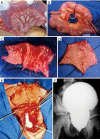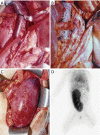Urologic issues in pediatric transplant recipients
- PMID: 31080773
- PMCID: PMC6503233
- DOI: 10.21037/tau.2018.06.17
Urologic issues in pediatric transplant recipients
Abstract
The limited supply of kidneys for pediatric transplantation leads to a large number of children in waiting transplant list. These patients have to be properly evaluated and prepared before organ transplantation to increase its success. The aim of this review is focus on urologic issues of pediatric kidney transplants such as preoperative evaluation and urinary tract abnormalities correction, surgical technique, and postoperative complications. All children that are candidates for kidney transplantation should be submitted to abdominal ultrasound. If bladder dysfunction is suspected, a more detailed evaluation is mandatory, including a voiding cystourethrography and urodynamic study. Patients with a poor bladder capacity and compliance will require bladder augmentation. Whenever possible the native ureter is recommended for that. Regarding kidney transplantation, recipient surgery can be safely performed through an extraperitoneal access, even in children weighting less than 10 kilograms. It allows adequate access to iliac vessels, aorta and vena cava. Graft survival continued to improve over the past decade and it is around 80% in 5 years. Postoperative complications such as urinary fistula may occur in less than 5% of cases, while vascular complications are reported in 1% to 2% of cases.
Keywords: Kidney; pediatrics; transplants; urology.
Conflict of interest statement
Conflicts of Interest: The authors have no conflicts of interest to declare.
Figures



References
Publication types
LinkOut - more resources
Full Text Sources
Miscellaneous
